Loving all this vintage Herbie that’s coming up on YouTube. This time Bremen, Germany, ‘74, with Mike Clarke rockin’ (or should that be ‘jazz-funkin’?) that ‘70s ‘tache & psychedelic print shirt!
Also from the same sessions:

renaissance man
Loving all this vintage Herbie that’s coming up on YouTube. This time Bremen, Germany, ‘74, with Mike Clarke rockin’ (or should that be ‘jazz-funkin’?) that ‘70s ‘tache & psychedelic print shirt!
Also from the same sessions:
This is an interesting video. It’s great to hear a fantastic drummer telling it, from his perspective, like it is.
It reminds me of a video in which George Harrison says he could be quite a good guitarist if he could be bothered to practice!
Although I am a drum teacher, more broadly speaking – as a musician/artist – I wouldn’t necessarily advice that anyone to do as I do, or, for that matter, as Ian Paice does.
Unlike Paice, I haven’t had a stellar career recording and performing with one of the worlds’ most successful rock bands.
What I do have in common with him, however, is noticing that when I have periods of frequent live musical activity – rehearsals, recordings, and especially gigs – my playing develops quite naturally/organically.
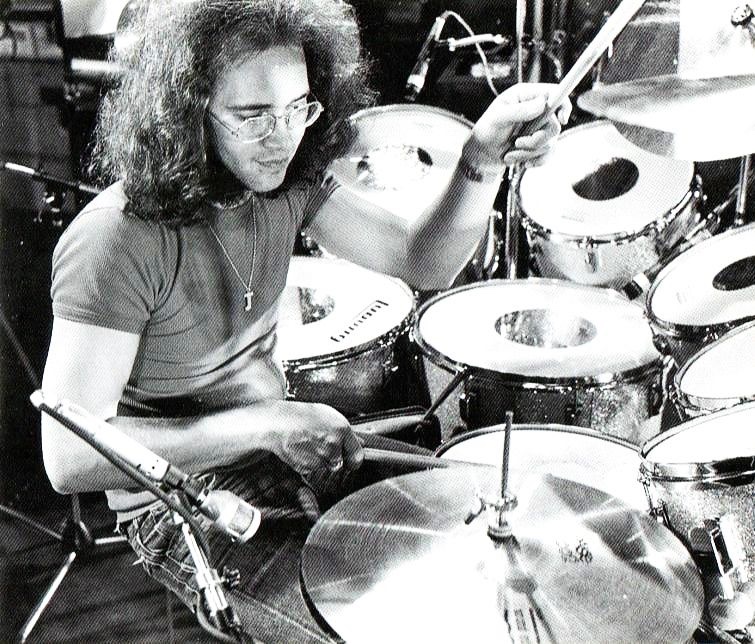
But then again, unlike Paice, I’m someone who does actually positively revel in practice. Indeed, over time I’ve evolved away from the ‘just jamming’ model (what I call ‘free play’ in my teaching), as favoured by Ian, towards focussed technique-based work.
I think ideally one ought to have a see-sawing motion of balance between such free play and technical development. Both ought to inform and improve each other.
Interestingly, one of Paicey’s favourite hobbyhorse points concerns the single-stroke roll. And that in turn reminds me of a video in which Grayson Nekrutman seeks to emulate Buddy Rich’s lightning speed singles (amongst other things!)
Ian Paice believes, and I can totally see and understand why, that everything else in drumming flows from this single simple yet limitlessly challenging technique or rudiment.
Anyway, let’s treasure, celebrate and learn from Ian whilst we still have him around. What a legend!

I have been digging the fantastic drumming of Takashi Sasaki for a while now. He was, strictly speaking, Casiopea’s second drummer. Their first drummer, Tohru ‘Rika’ Suzuki, didn’t record with the group (at least not on an officially released album). Hence Sasaki is commonly thought of and referred to as their first, as he’s the first to be heard in the chronology of their official recorded discography.
His style is light, tight, intricate and highly musical. His chops are extraordinary. With a mastery of dynamics – the range between his ghosted notes, standard hits, and accents, make his playing very hard to accurately emulate – and a penchant for a style Weather Report infamously described as ‘soloing all the time without ever soloing’.
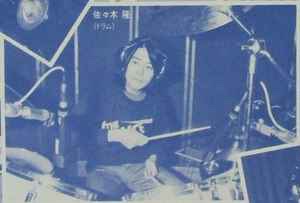
He can and does get busy at times, but he always grooves like a mother! Some of his fills are truly ballistic. And, occasionally, they’re almost impossible to decipher. This is particularly true of a few fills (and possibly even grooves?) on the super tasty Midnight Rendezvous.
Even using Moises to isolate the drums, and ASD to slow them down, there’s a fill at around the 3.00 mark that is doing my noggin in. I initially thought perhaps it was in fives, or something like that. But repeated listening leaves me stumped. I need to have it running as a slowed-down and visual (wave-form) loop, methinks. I’ve not tried that as yet.
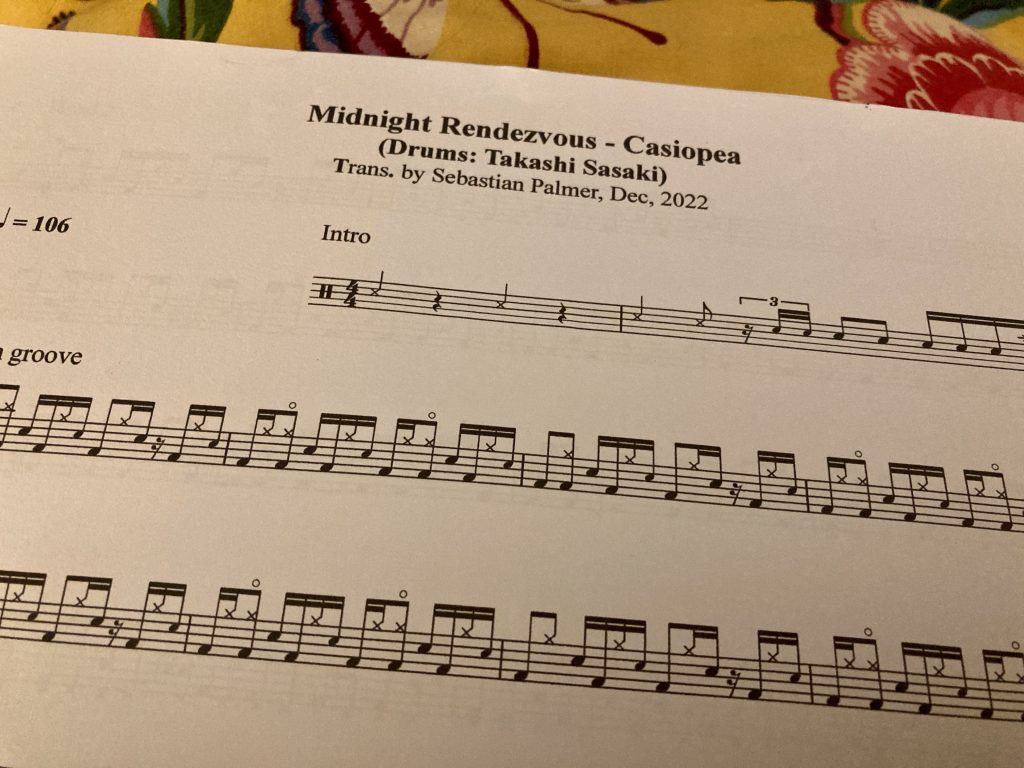
It’s taken me a good few hours to get down the first two pages of what will, I think, be a four page score. And even the fifty or so per-cent I’ve done so far will, undoubtedly, be subject to some revision.
I’ve got as far as the end of the (very tasty) guitar solo. Next up is the keys solo, under which Sasaki does some very light and intricate stuff. I’ve blocked in some of this latter section. But I’ve yet to get in there and tweak it.

All the cats in this band are just utterly phenomenal. They play in that deliriously groovy sweet-spot, where instrumental prowess and sheer good taste, when it comes to musical choices, collide.
Once I’ve finished the transcription, I intend to learn to play the whole piece as best I can. I’d like to do a YouTube video cover of it, and share it online.
It’s funny for me, as a primarily self-taught drummer, who’s only learned to read drum music ‘on the job’. Stuff that ‘classically trained’ musos might find obvious and easy can sometimes fox me. Transcribing stuff is proving a great way to teach myself written music. Albeit I’m still dealing in timing only, and not pitch/harmony, etc.

Here’s a specific example of how I’m learning on the job: there are some quick ‘crushed bounce’ style left hand-doubles – sometimes such stuff is played as a buzz; but oft-times you can clearly hear these as a double – and I initially thought, ok, just turn a single 1/16th into two 1/32nd’s.
But that just sounded so wrong! So instead I turned the ‘&-a’-notes from two 1/16ths (or more [in]accurately one 1/16th and two 1/32nd notes) to a group of three 1/16 note triples. The resultant ‘4-e-&-trip-let’ subdivision sounds and feels sooo much better. And that’s how he plays it. Learning on the job!
* Those tom angles!? They look awful… like a school-kid’s drum set up. Still, the sounds he gets, the feel he achieves, that’s the proof o’th’ puddin’. Just goes to show there’s no single right way. Each to their own!
Great near 40 minutes of Herbie and co on Danish TV, from 1976.
Personnel
Herbie - Keys
Bennie Maupin - Sax, etc
‘Wah Wah’ Watson - Guitar
Paul Jackson - Bass
James Levi - Drums
What terrific music. Such a great combination of funky groove, and jazz, with the perfect balance of instrumental prowess and structure, creating instrumental sounds that absorb and uplift. Truly music that is both high art and tasty home-cooking.
Setlist (taken from the YouTube post)
Herbie Hancock and his band perform cuts from the albums “Man-Child” and “Secrets”:
1. Hang Up Your Hang Ups (from Man-Child, 1975)
2. Gentle Thoughts (from Secrets, 1976)
3. Spider (from Secrets, 1976)
When I was running my own jazz funk group, I had all three of these tunes on my setlist wish-list. We did occasionally play some of the usual suspects: Watermelon Man, Canteloupe Island, Chameleon. And one or two less frequently covered numbers, such as Wiggle Waggle, and that one Dee-Lite sampled (I forget the title!).
Others that I really wanted to do include Actual Proof and Tell Me A Bedtime Story. Oh, Herbie! What a talent. And surrounding himself with folk like Paul Jackson, Bennie Maupin, Bill Summers, and a parade of drummers and guitarists that include the likes of Harvey Mason, Mike Clark, and of course Watson and Levi.
Wah Wah Watson’s Gentle Thoughts epitomises an era for me. I may have ‘golden age syndrome’* when it comes to stuff like this? And who knows, perhaps actually now is the golden age? Inasmuch as I can enjoy this Danish TV show that, at the time, I had no idea about.
Ah, the sheer bliss, of watching and hearing the joyous melodic grooving of Gentle Thoughts, in an expanded live version. These righteous dudes both recreate the magic of the album version, and transcend it, with the live improv’ aspects of the performance.
So, I’d like to thank Herbie and co for the music, Tim Berners-Lee for the internet, and YouTube and ‘Phazers’ for hosting/posting this. Thanks for making an everyday Saturdsy magical.
* I get this phrase from Woody Allen’s Midnight In Paris.

I have a few ‘coffee table’ art books on the subject of jazz record covers. And whilst all of them contain great stuff, none of them quite capture or distil the real magic of the best album covers as I wish they would.

I think to do that they’d have to be bigger than LP-sized, and reproduce all the covers at full size. Ideally with room to spare. There’s naught worse than beautiful images that run into the gutter/spine of a book! Well, I admit, there’s a lot that’s worse. But you know what I’m saying.

This post isn’t meant to be in any way comprehensive. For starters I’m limiting it purely to one record label and one artist: Art Blakey on Blue Note. But isn’t it amazing how great these covers are? For my money they elevate the packaging to a plane very much akin to the music.

And when both music and art are sublime, that kind of sympathetic synergy is a wonderful thing, to be savoured, treasured, and just plain enjoyed/appreciated… so feast your eyes. And, ideally, put on some Blakey, and feast your ears as well!
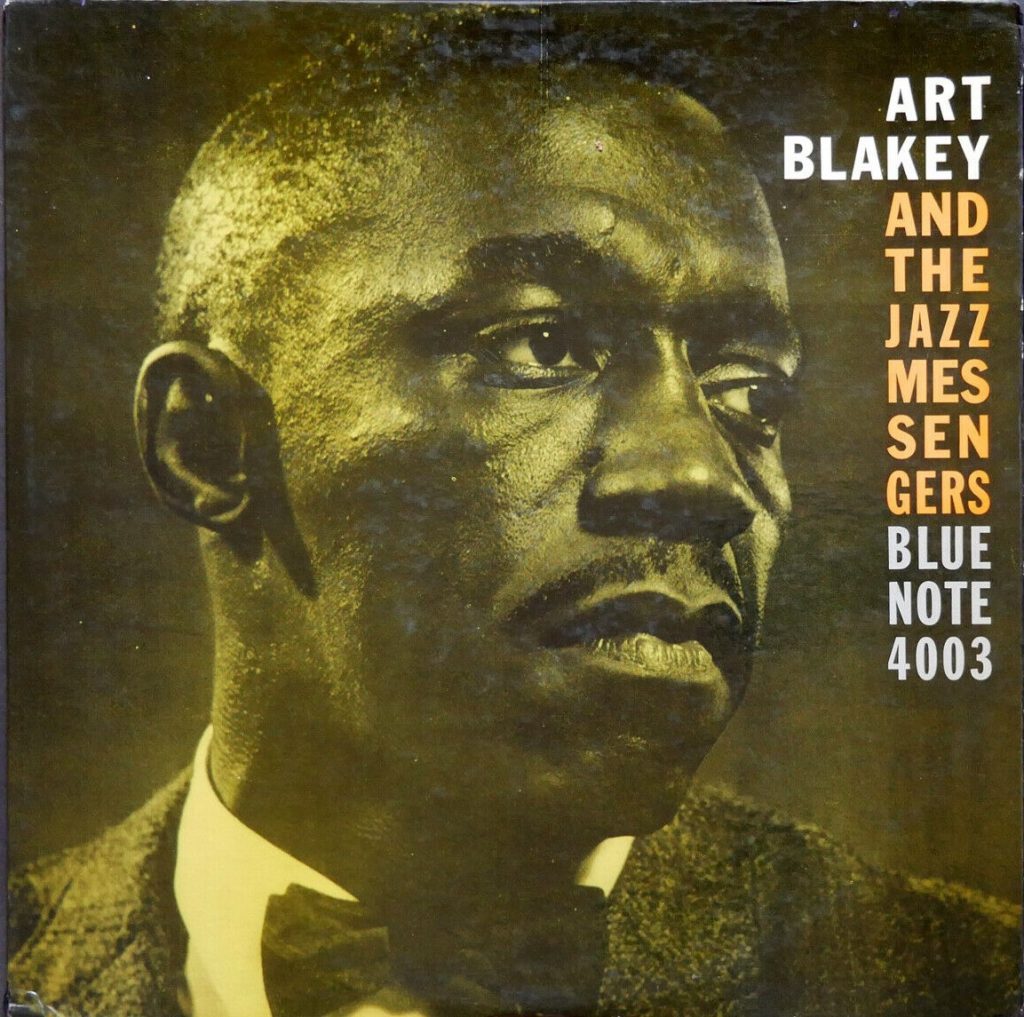
In Art Blakey Reid Miles and Francis Wolff found someone who had the musical spirit they loved, plus seemingly unbounded energy and charisma, and really striking looks to boot. He’s a funny looking dude, in some ways. But he’s incredibly photogenic with it.

Wolff would be busy, snapping away at recording sessions. And then later Miles would work his hyper-aesthetic design magic. The resulting package is on a par with the music, as art in its own right. And it helps lend the era/genre a hard to define but instantly recognisable vibe, both rootsy and yet sophisticated.

Above is the kind of raw material Wolff would provide Reid Miles with, a fantastic studio shot of the artist at work. Interestingly Wolf’s photographic estate is handled (at least in part?), by the specialist jazz label Mosaic, who might very well have taken their name – they certainly share it – from a Blakey track.
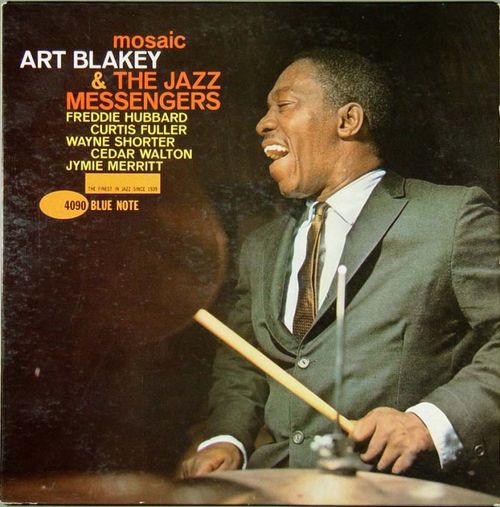
A lot of the covers use black and white photos with single colours as screening tints. And the use of typography is just phenomenal. But as the images directly above and below demonstrate. Miles could still weave his spells with full colour imagery, and more colourful font palettes.
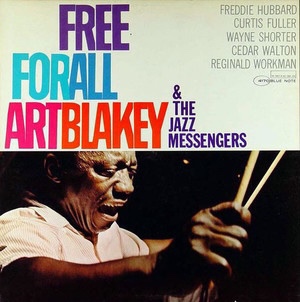
Whether using a fuller range of colours, or going super stark and minimalist, as on Three Blind Mice (below), these covers have a tremendous power. I absolutely adore them!
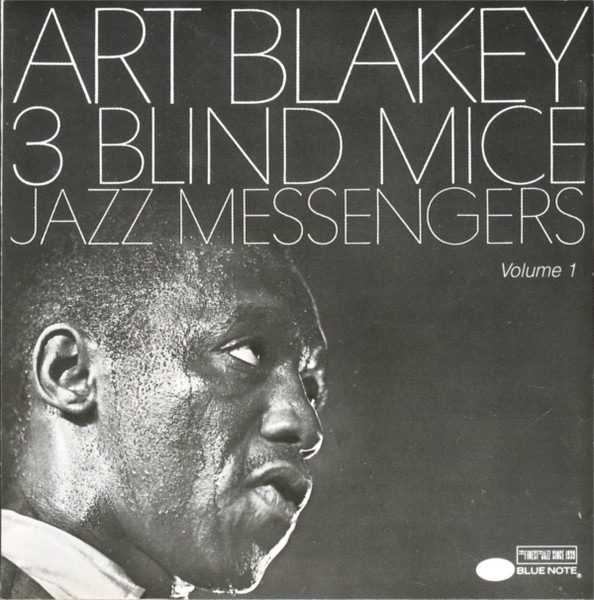
Pictured below is one of the books mentioned at the top of this post.
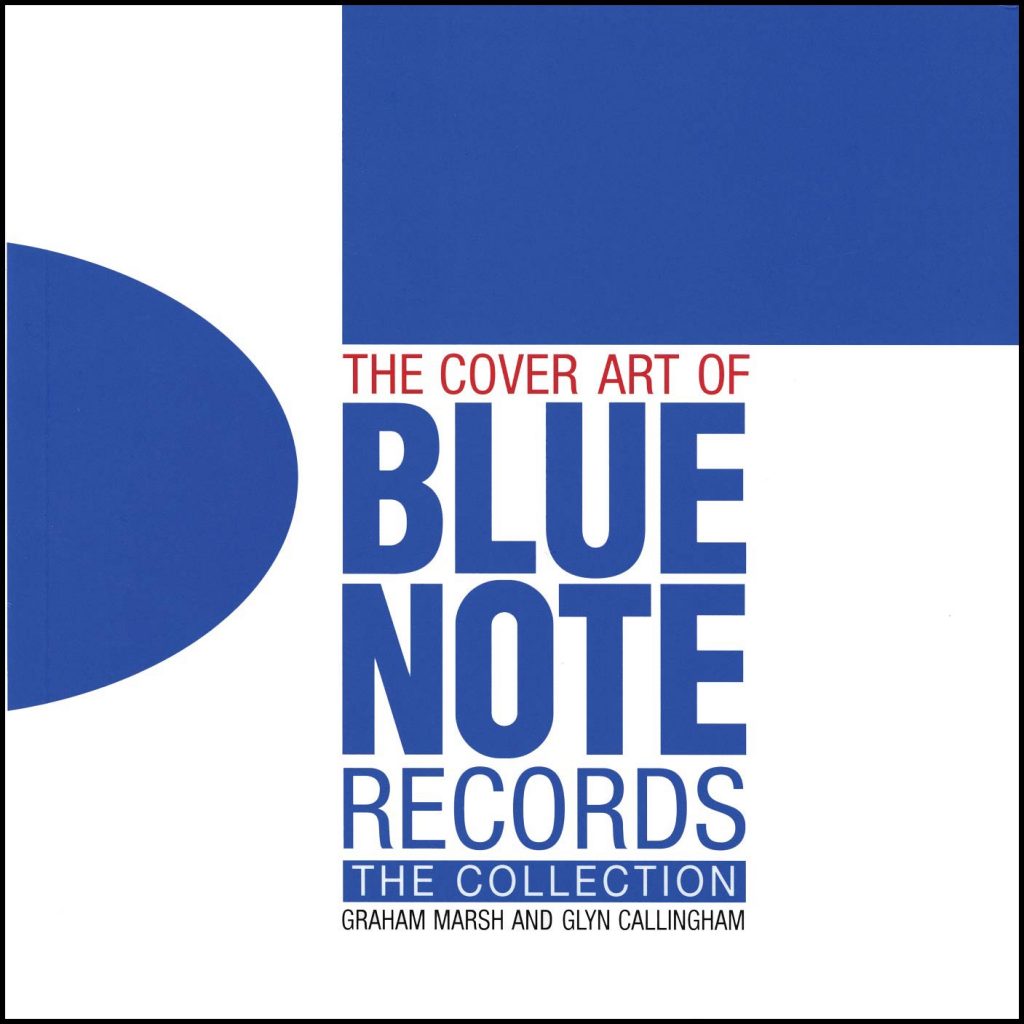
Also worth noting is how the Wolff/Miles house style lives on. The following images are all later non Wolff/Miles productions that clearly owe a debt to and seek to emulate (with varying degrees of fidelity/success) the classic Blue Note house style.

The above is, by normal standards, a great cover. But frankly it’s not in the same league as the real deal. The effort below is a lot better.
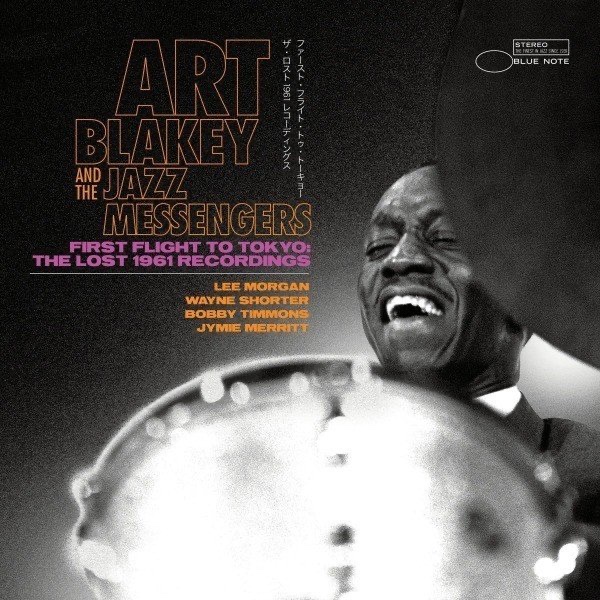
I intend to get a body of these and similar record covers decently printed, and then frame and display them myself, both in my office/home studio, and around our home. To finish, a very early example, from back when Blue Note issued 10” discs. And this last one finds Blakey sharing the billing with another Blue Note legend, Horace Silver.

* I’ll prob do another separate post on the sub-category of Blue Note album covers that favour semi-abstract photos, often either out of focus, or treating imagery in almost purely textural terms.


I can’t believe I haven’t already posted this album!? Or have I!?
The YouTube video above was my introduction to Casiopea. And it was love at first sight/sound. Sadly only two or three tracks from this splendid performance are to be found online.
Like Led Zeppelin’s fabulous debut of a decade earlier, it’s the group’s brilliant drummer who kicks things off on 1979’s eponymous debut.
Bassist and co-founder Tetsuo Sakurai is clearly indebted to Antony Jackson and Headhunters era Hancock for the main spinal groove of opening number Time Limit. Horns are courtesy of Yankee-doodle fusionistas Dave Sanborn and the Brecker Bros.
After the taught and energised slap around the chops that is Time Limit, things shift down a few gears for the silky smooth boudoir vibes of Tears Of The Star. Founder member and guitarist Issei Noro plays a beautiful acoustic guitar solo, after which bassist Tetsua Sakurai shows his tastefully restrained chops, deploying a wonderful classical guitar style (fingered tremolo?) on his bass. And then the song builds to a climactic keys segment, before returning to the opening mellow vibe, to shimmer out with a smattering of sexy sax. Fantastic!
Track three Space Road starts with a more upbeat version of the groove that Tears finished with, before launching into a very energised slightly Latin-esque groove, over which the chords progress in a manner that suggest a constant rising of pitch and energy. These guys really are incredibly tight and sympathetic. Midway through Noro goes into his solo, starting with a kind of crying seagull sound that reminds me of another Jap-Fusion guitar monster, (what’s his name? The Rainbow Goblins dude… is it Masayoshi Takanaka?). For the keys solo, Sasaki goes to his cowbell. More cowbell!!! The energy is off the charts, but it’s all so controlled, and clean. Really incredible.
I think on this debut disc all compositions are by guitarist, Issei Noro. They really capture or represent a certain very bright very positive era of fusion. And on that note, we get to Midnight Rendezvous. Definitely a Desert Island Discs choice pour moi! I’m going to have to teach myself the drum parts to this sublime recording.
The groove is a masterfully balanced combo’ of simplicity and subtly challengingly nuanced feel. One of those rare and beautiful moments where everything is in perfect balance. You wouldn’t want to add or take anything way. It’s perfect! Noro’s guitar solo exemplifies this: structured, and yet excitingly on the edge, as if perfectly poised between composed and improvised. No wonder they play it more or less note for note live. Why mess with perfection?
Sasaki gets a kind of outro solo, in which he really just grooves, rather than out and out soloing. And again, it’s perfect for the song. His chops are, frankly, staggering. Once again attaining that perfect sweet spot between composition and improvisation.

What was side two kicks off – or on CD continues – with the majestic Far Away. Strings are added to the mix here, as indeed they are on numerous tracks. The strings are credited to ‘Tomato Strings’! Whoever that was, they’re once again pitch perfect. Noro’s signature riff on Far Away is the perfect bedrock for the band to groove and solo on. And like the entire album, it’s suffused with a joyfulness characteristic of the fusion these guys make.
Swallow sees the tempo raised again, Sasaki’s drumming simultaneously ballistic and yet tightly focussed, restrained even. Astonishing! And like every instrument on these recordings, his kit – drums and cymbals – sounds utterly perfect. I’d love to know exactly what cymbals he plays. They have a sound I want to be able to emulate/recreate.
They reach a pitch of ballistic bombast in this track, just before Sasaki’s brief but powerful drum solo, that captures the intensity of their live performances. What an incredible band! Awesome is a much overused and abused term these days. But it’s just right for these dudes.
The penultimate track is the only number to feature vocals. And, like everything else here, they’re absolutely terrific! Kind of makes you wonder why they didn’t have more vocals in their music? But really they are an instrumental jazz fusion outfit. So their instruments do the singing, by and large. But it’s interesting to note that they could sing, and beautifully. Noro even goes a bit Benson, delivering a tasty scat’n’axe solo.
The album finishes, all too briefly, clocking in at under 40 minutes, on another atomic fusion bomb, Black Joke, the other track from the 1979 live performance viewable – see video above (warning: humongous bass solo alert!) – on YouTube. Phew!!! What a magical excursion to a land of musical waves, mountains and exquisite cherry blossoms!
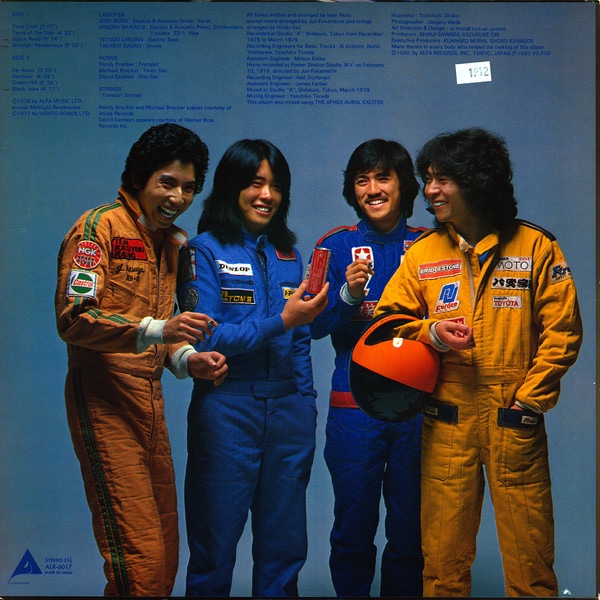
Although I’m primarily a drummer, and totally dig the brilliance of Takashi Sasaki’s jaw-dropping performances throughout this album, props have to to every single person playing on this utterly magnificent album. And Black Joke signs off just as they started, all cylinders firing in beautiful concert.
Minoru Mukaiya’s keys are note perfect, the selection of sounds, from mellifluous Rhodes to funky synths capturing a period vibe that to me is pure heaven. Tetsuo’s bass playing is muscular and lithe, light or heavy, and – like everything else here – pitched to sublime perfection. Band founder/leader and chief composer Issei Noro is on blinding form. Whether he’s shredding, or laying down the greasiest fonkiest riffs, he’s always bang on the money.
And Takashi Sasaki? Well, as I’ve already said numerous times above… words fail me. Drumming attains musical perfection sometimes. And this is a case in point. There are a few albums – LeRoy Hutson’s mid ‘70s stuff – or tracks (Herbie’s Actual Proof, Jackie Wilson’s Higher and Higher, Toto’s Georgy Porgy) – and this, which attain a peak of perfection I can only be dazzled by and forlornly dream of aspiring to.
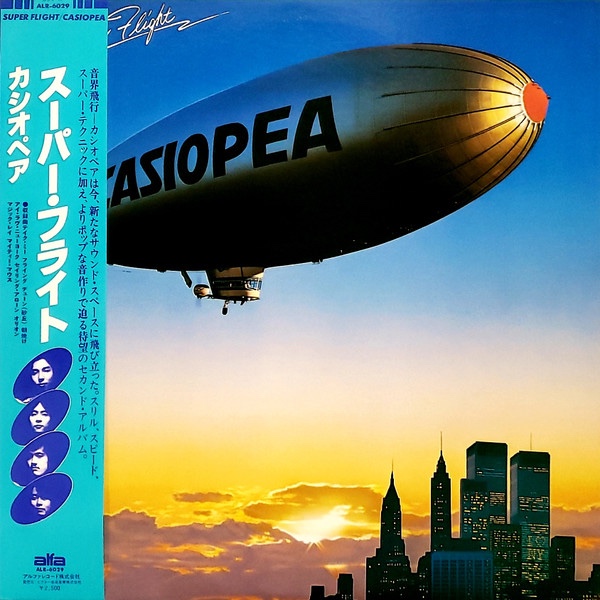
If you dig the first Casiopea album, as I do, you’ll want their second, Super Flight (pictured above) as well. It’s the last to feature the sublime drumming talents of Takashi Sasaki. Or would that actually be Mint Jams? The latter sees the arrival of the very talented Akira Jimbo. But it may also feature Sasaki on some tracks.

Fans of the line up that recorded Casiopea’s first two albums, with the astonishingly crisp, precise and lightly deft drumming of Takashi Sasaki, might enjoy this recording, by keys player Tatsuya Kohima, which features the Casiopea lads as session backing band.



The last of Santana’s sublime run of jazz fusion albums, 1974’s Borboletta has some truly superb cuts, such as the epic eight minute jazz samba Promise Of A Fisherman, and the whole opening 15 minutes or so, starting with Airto and Flora Purim’s Spring Manifestations soundscape, and morphing or segueing seamlessly into the hypnotic Canto De Los Flores, and then classic Santana vocal numbers Life Is A New, and the super hard Latin Funk grooving of Give And Take.
This was Michael Shrieve’s last hurrah, and boy does he play well! His successor Ndugu Chancler is, whilst very different, no slouch, and can be heard giving it a lighter yet still fiery Latin jazz touch on several tracks. Stanley Clarke and the returning Doug Brown provide the low register action, and Tom Coster handles keys with perfect aplomb.
And as well as guesting as wild man of the jungle, with wife Flora in support, Airto adds both drums and percussion, the latter also supplied in spades by maestro Armando Peraza, and Jose Areas. Leon Patillo’s vocals are a distinct and new/unique flavour in the evolving Santana sound. I dig his composition Mirage!
Truly extraordinary music, played with fire and passion by terrific musicians. Essential!
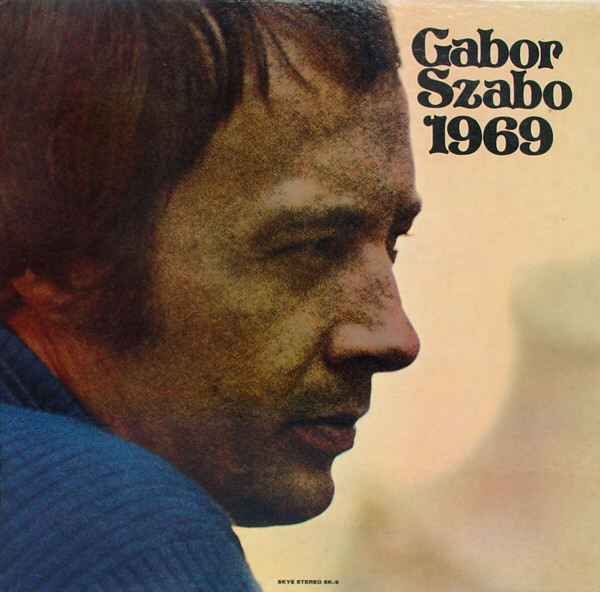

Phew!
Out of the blue, after a long of spell of excellent sleep, I’ve just had a pretty awful night of insomnia. And, ironically, I’ve finally gotten around to starting to read Robin Walker’s Why We Sleep. So I’m more than usually aware of how bad losing sleep is!
Anyway, after several hours of just lying in bed, fully awake, I figured I might as well do something, since I wasn’t apparently able to sleep. So I wrote a bit, for the blog, and I listened to 1969 (and some other stuff, inc. Mizrab), by Gabor Szabo. Holy guacamole, 1969 is really good!

Before getting into it track by track, here’s the track list and personnel credits:
Dear Prudence
Sealed With A Kiss
Both Sides Now
Walk Away Renee
You Won’t See Me
Michael From Mountains
Stormy
In My life
I’ve Just Seen A Face
Until It’s Time For You To Go
Somewhere I Belong
Gabor Szabo - guitar
Francois Vaz - guitar
Mike Melvoin - keys
Louis Kabok - bass
Randy Cierly-Sterling - bass
Jim Keltner - drums/percussion
George Ricci- cello
Gary McFarland - arranger
It’s pretty stunning to think that stuff like this is how drummer Jim Keltner, who I first grew to know and love through his long term associations with Bob Dylan and Ry Cooder, got started! And everything about the whole musical package is so great I want to know more about all concerned. Didn’t keys man Mike Melvoin play with Tom Waits, on Nighthawks At The Diner?
Some of the other names – Francois Vaz, Louis Kabok – are new(-ish) to me. Gary McFarland I’d heard of. Along with promoter Norman Schwartz and Cal Tjader, Szabo and McFarland founded the short lived Skye Records, for which label this absolute gem was recorded.
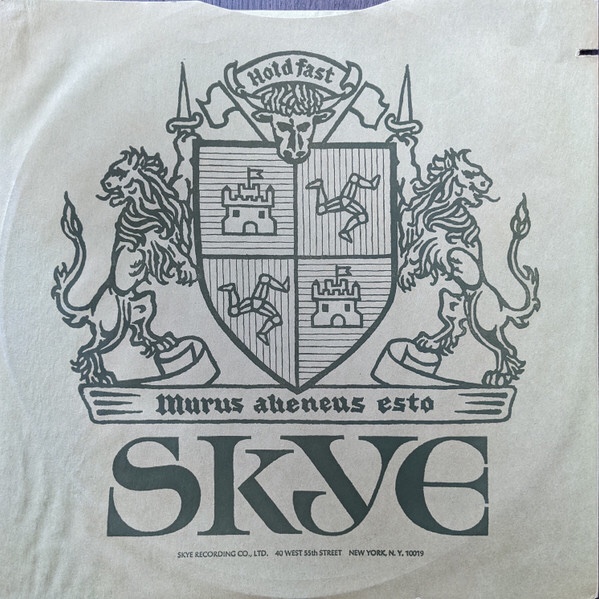
Having dipped into this album frequently recently, I’d still not listened the whole way through. That is until my recent bouts of insomnia. The night before last, during which I didn’t sleep at all – until I caught up a bit during the day* – I listened to the entirety of 1969 in one sitting (or, to be more accurate, one laying!).
* As a teacher on school holidays I’m lucky I can do this!
The version I listened to, a full-album rip on YouTube, doesn’t have the best audio quality. I’m hoping when I get this on CD it’ll be better! This YouTube version is rather muddy, sonically. And most Gabor Szabo stuff is immaculately recorded. But that aside, the quality of the performances is superlative.
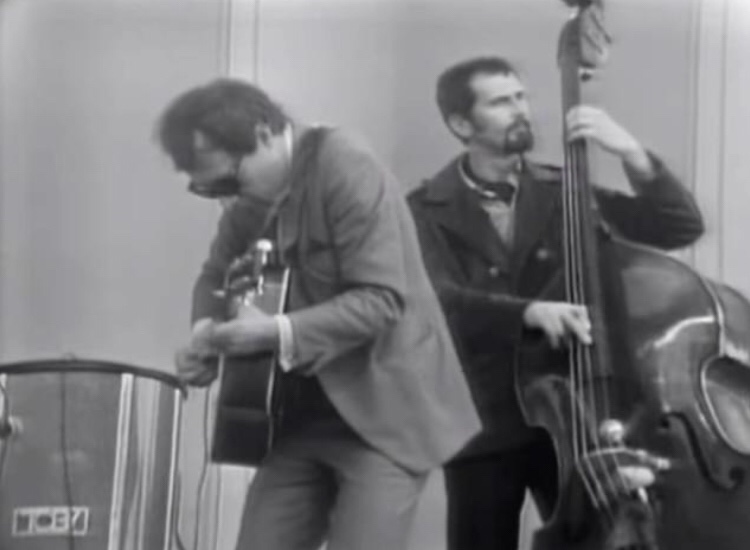
The group is an interesting one, as all the players have jazz chops, but are also very comfortable with and attuned to pop/rock sensibilities, such that they can play with a stripped down minimalism most out and out jazzbos very rarely manage. Although Gary McFarland isn’t a player here, it strikes me that perhaps his arranging and producing skills are instrumental in achieving the sounds and the, er… vibes?
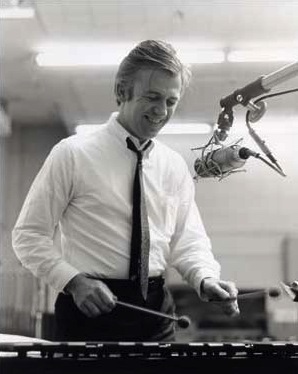
I’m going to come right out and say it; I do believe this one of Szabo’s greatest records. Oft times it’s belittled (albeit not as much as his late ‘70s stuff; Doug Payne calls much of Faces ‘disco trash’!), particularly by those who prefer his more overtly trad’ jazziness. (I don’t mean Dixie!).
Part of the charm of this particular album is the material. There are four Beatles numbers, two of which – You Won’t See Me and In My Life – are from Rubber Soul (possibly my favourite Fab Four album?). And, as well as several more obscure choices, there’s the oft-covered Stormy.
But what’s this? Two Joni tunes!? Both Sides Now has been covered umpteen times. And Szabo’s version is brilliant. But Michael From Mountains? This latter ranks with Mark Murphy’s Barangrill, and Don Sebesky’s Song To A Seagull. Simply having the good taste to pick such wonderful material, never mind the required skill to make such a unique artists’ unusual music one’s own… fab!
Ultimately 1969 hits that eargasmic G-spot for me: musical perfection. Everything is just so. You could try to label it: it’s partly jazz, partly pop, partly rock, bossa, easy-listening, psych, etc. The joy and the magic lies precisely in rendering such categorisation efforts totally footile*. It’s just great music.
* The Fenland yod-dropping way!

Whilst writing this post I discovered that Cherry Red did a reissue/compilation called Sketch For Summer, which focussed on McFarland and Szabo’s richly creative partnership. Like almost all the music I’m getting interested in lately, this is OOP and hard/expensive to find! It only covers their 1964-‘68 collaborations, so nothing off 1969 is included. Interesting to see two tracks are with Brazilian maestro Tom Jobim!
But to round off, back to ‘69! The album starts with Dear Prudence, and ends with the only Sabor original in this particular set, Somewhere I Belong. I’m giving this disc my rare accolade of six stars. That’s a bit like Spinal Tap’s amps going up to eleven: the normal range is 0-5 stars. Only the crème de la crème attain the hallowed six!
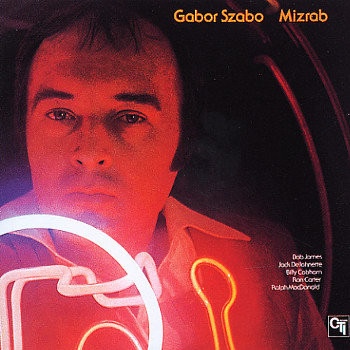

This arrived on Sunday. It’s a Japanese reissue, from a series of CTI re-releases; sadly the liner notes are Greek to me, so to speak.
Recorded at Rudy Van Gelder’s famous studio, in ‘72, it was the first of just three for Creed Taylor’s equally famous CTI label (the others being Rambler and Macho).
With a rhythm section of Bob James, Ron Carter, Ralph MacDonald, Billy Cobham and Jack DeJohnette, and horns that feature Hubert Laws and others, Szabo is supported by a stellar cast. The arrangements are by Bob James, and it’s all engineered by RVG.
What was side one was made up of the first two lengthy cuts, Mizrab and Thirteen, both Szabo originals. Side two develops the guitarist’s famously eclectic range in terms of other folk’s material, with It’s Going To Take Some Time, by Carole King, and Seals’ and Crofts’ Summer Breeze, sat either side of a Szabo take on a Shostakovich Concerto!

The album kicks off with Szabo original and titular Mizrab, Ron Carter’s opening bass figures conjuring an Arab-influenced exoticism suggested by the track’s name. Once it gets going, there are shades of modalism, and things even sound Metheny-esque occasionally.
The title track clocks in at just under ten minutes, and after Szabo’s own long solo, the rhythm section of Bob, Ron, Billy and Ralph really cook the groove in a deliciously early ‘70s jazz fusion vein, so very CTI!
It’s interesting hearing Cobham playing in a more restrained than usual manner! Which he does admirably, whilst still retaining his instantly recognisable touch and sound. Towards the end he ramps it up a bit, when taking a solo. Does he also slip out of sync? I’m friends with Ron Carter on FB. I might have to ask him about this!
The same group then tackle a second Szabo number, called Thirteen. This begins with Szabo’s and Ron duetting, showing what total masters of their instruments they are, in a fabulous interplay, before Cobham and co join (sans Ralph, poss’?), for an epic jam.

The main two chord vamp is just a semi-tone shift, again evoking eastern vibes. And, having introduced that term, I have to pause and remark on what an incredible vibes player Szabo is. Not vibraphone, obviously! But feel. And it’s clear that his vibesmanship is subtly but strongly steering the whole ensemble.
Also clocking in at near ten minutes (just over nine this time), the groove and feel are quite radically different ‘cause Bob James is playing acoustic piano, as opposed to the Fender Rhodes type electric of Mizrab.
Also worthy of note is that there’s quite clearly, on both Mizrab and Thirteen, a second guitar. But it’s Szabo overdubbing, rather than another player. Yet another sign of Gabor’s unusual and idiosyncratic take on contemporary jazz. Really quite something!
After the long epic intensity of the two tracks of ‘side one’ cone the three shorter tracks that formerly comprised ‘side two’. These are where the strings and horns come in, with that rich, lush and full CTI production feel.

Carole King’s It’s Going To Take Some Time feels aptly light, and pop-folk, after the jazzy intensity of ‘side one’. But despite the expansion from quartet or quintet to a full on studio number with strings and horns, it’s still very Szabo, and sits happily with the foregoing material.
Things get a bit more ambitious with Concerto #2, which starts out like a small to medium chamber orchestra, and is more Shostakovich/classical – naturally – than what has preceded it. When it transitions from orchestra to jazz ensemble a pronounced 6/8 feel emerges, and the much lighter touch of Jack DeJohnette on drums adds to the change of feel.
I’m not always convinced by jazz meets classical experiments (Garbarek with The Tallis Scholars was awful!). But I quite like what Szabo et al cook up here. Interestingly it starts out classical, goes all jazz, and then the two start to blend and merge. This is an approach Don Sebesky explores on another excellent CTI recording, Giant Box, albeit with a rather overall effect.
And so we come to the fifth and final track, the Seals and Croft classic, Summer Breeze, which I first grew to know and love via The Isley Bros version. Cobham is back in his throne, and this track returns the entire recording to a kind of sonic and spiritual home/centre, that perfectly balances all the disparate yet homogenised elements that all the players and the material have brought to the party.
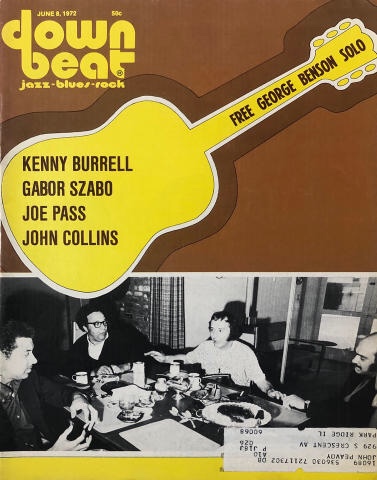
There’s plenty of strings and horns, beautifully arranged by James, a middle soloing section over a cleverly constructed riff (Carter and Cobham expertly driving the groove, with a little ‘back to front’ but if rhythmic play thrown in) from the song, all bookended with the melodic themes of the original composition, beautifully played by a truly stellar cast of musicians, fabulously recorded by Rudy, delivering another gem for Creed. Result!


‘Tell it like it is, it ain’t nothin’ but The Biz, a little more, Gabor!’
I’ve been really diggin’ Gabor Szabo recently. And it was when I was reading Doug Payne’s excellent online biography of the Hungarian guitarist that I noticed something startling. Amongst the personnel credits for 1977’s Faces, was Marlon McLain, of Pleasure.
I love Pleasure! And I love Gabor! So I looked again, a bit harder, and, lo and behold, also credited: bassist Nathaniel Phillips, drummer Bruce Carter, and Wayne Henderson, of Crusaders fame. ‘Twas Henderson who was acting as avuncular to Pleasure, discovering, signing and producing them. So in essence we have a Pleasure rhythm section (guitar, bass, drums) + Szabo! All produced – and with horns arranged by – Wayne Henderson. What’s not to love!?
I can see how some of the ‘moldy [sic] figs’ – those self appointed champions of jazz ‘purity’ (surely a massively mistaken and oxymoronic idea?) – might react against such a combo’. Not me! Two artists I love combining forces? Bring it on!
And, unsurprisingly, for me at any rate, I do indeed love the result. And this despite the inherent danger of disappointment when one’s much loved stars align; will it work? I mean, they are quite different; Szabo the oddball jazzer, and Pleasure the funky soulful groove merchants. I guess it dosa have to be conceded this isn’t my favourite Szabo, nor the best of Pleasure.
Anyway, to the music. It has a delicious mid to late ‘70s vibe, with echoes of everything from CTI to Steely Dan in the mix. And obviously a Crusaders/Pleasure vibe. Szabo is, of course, Szabo, as always! But for the most part his sound sits, comfortably enough, atop the rather silky smooth even quite lush musical Henderson/Pleasure style settings.
I must admit I am a less less enthused with the smattering of female vocals, which are most evident at the outset. They’re not awful, by a long shot. But I can see the moldy figs visibly rotting in reaction! The album opens with The Biz, in which the ladies croon ‘It’s a whiz, do The Biz… a little more, Gabor’! Kinda corny, I guess? But actually, the music’s great. And, in essence, the words are saying something I can totally get behind.
Track six, Alicia (I have a niece named Alicia, so that’s a nice resonance for me!), is incredibly Dan-esque in places, sounding very Deacon Blues-ish at times*. This is also one of two tracks that are repeated in slightly different form as ‘bonus tracks’ on some editions of this album.
Perhaps somewhat ironically, the most beautiful track on this album, Estate, is the most Szabo and the least Pleasure, very literally; it’s either a solo piece, or just two guitars. Perhaps Szabo duetting with his frequent collaborator James Stewart?
Not the best album in Szabo’s catalogue, nor Henderson’s or Pleasure’s, but a solid meeting of some very talented musicians, that’s still well worth having.
* As a massive fan of steam-powered dildos, I find this to be no bad thing.